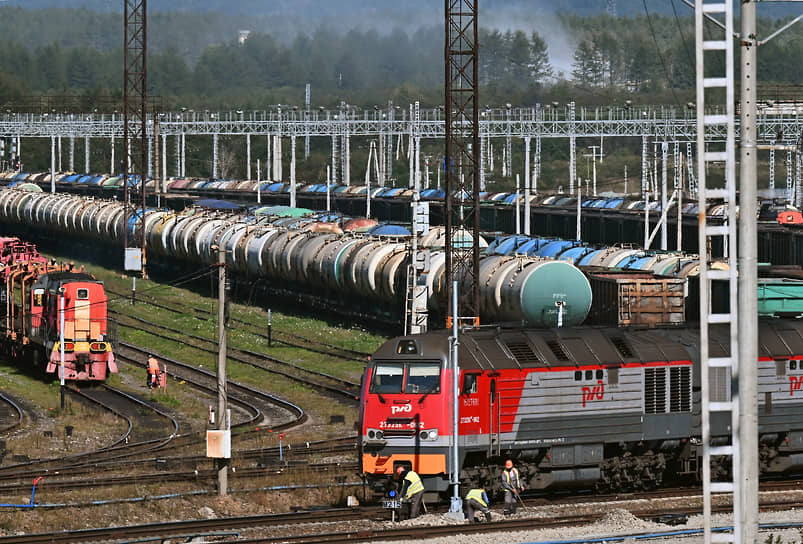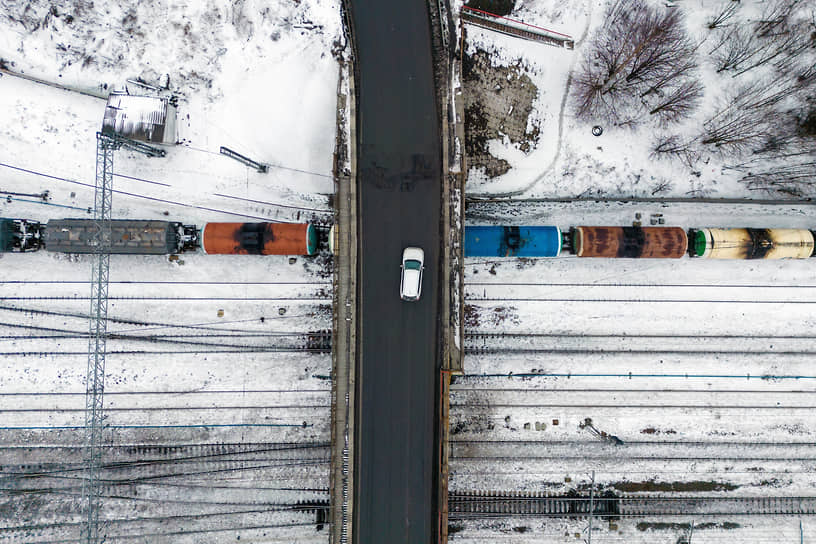IT-nörtti
Kapteeni
= 99,71%Donetskissa Putlerin kannatus lähenee 100%.
Follow along with the video below to see how to install our site as a web app on your home screen.
Note: This feature may not be available in some browsers.
= 99,71%Donetskissa Putlerin kannatus lähenee 100%.
Olitko hereillä helmikuussa -22?Ainakin päästää ryssän maajoukot vapaasti hyökkäämään sitä kautta. Nyt se ei niin ainakaan kovin avoimesti tee, ja ilmaiskutkin pyrkivät edes näyttämään siltä, että tulevat muuta kautta.
Tarkoittanet palvelimia ja muita tietoteknisiä laitteita, niin pienimuotoisemmassakin teollisuudessa ne on aina kahdennettu ns. dual-site klusterointi. Pitäisi aika tarkoin tietää, missä palvelinsalit ovat osuakseen. Datat on yleensä varmistettu kolmannelle saitille backup-storageen. Ei ole ameriikan temppu rakentaa systeemejä uusiksi noista backupeista. Tai oikeastaan se on just ameriikan temppu.Sähkönjakelu lie varmin tapa pysäyttää jalostamo, isku päämuuntamoon niin kaikki pysähtyy. Varavoimalla voidaan ajaa prosessi ehkä turvallisesti alas. Isku automaatiojärjestelmän ytimeen lie vaikeimmin korjattava asia, koska ollee pääosin länsimaista tekniikkaa. Tosin vaatii tarkempaa tietoa siitä missä jalostamon "aivot" sijaitsevat.
 Pitää vaan olla suunnitelmat disaster recoveryyn, varata HW ja testata eri skenaariot.
Pitää vaan olla suunnitelmat disaster recoveryyn, varata HW ja testata eri skenaariot. 

Kyllä noita lihavia maaleja piisaa, ei siinä, mutta ongelma lienee nyt se, että ihan kaikkeen ei riitä paukkuja iskeä. Mutta, se mikä näistä jalostamoista tekee täysin omantasoisen maalin, on se, että kun ne on tuhottu tai ns. ”ajettu alas”, niin se venäjälle Game Over. Venäjä on iso maa, joka on täysin riippuvainen näistä polttoaineista (kuten moni muukin maa). Ja jos polttoaineet loppuvat, niin sitten loppuu ihan kaikkia. Koko yhteiskunta pysähtyy ja mitään varasuunnitelmaa ei ole.Kyllähän ne jalostamot kannattaakin rikkoa sillä tavalla maltillisesti parista kohdasta, että ryssä alkaa nähdä vaivaa niiden korjaamiseksi, se on aivan järkyttävän kallista sekä työlästä hommaa. Paskoo sen sitten uudestaan kun alkaa kolonnissa uudestaan lämpö nousta, mutta ei tarvitse pidätellä hengitystä sitä odotellessa.
Jalostamot on selkeä prioriteetti 1 maali, mielenkiintoista nähdä mitä sieltä löytyy seuraavaksi. Kantamalla on paljon ryssien aseteollisuutta, lentokenttiä, kemianteollisuutta, metalliteollisuutta, voimalaitoksia, järeitä verkkomuuntajia, polttoainevarastoja, veturivarikoita, kaasuinfraa, satamia jne.
Kyllä se Venäjän IT:n siirtely on yhtä tyhjän kanssa, kuin hölmöläisten peiton jatkamista kun toiseen paikkaan saa jotain suojaksi niin toisessa jää ammottava aukko, koko maa on maaleja täynnä, ole kuin valita mieleisensä. Samaan aikaan menee viikossa 5-15 IT vehjettä rintamalla romuksi ja droonien sekä ohjusten torjuntaan satoja IT-ohjuksia eikä uustuotanto kata kuin osan menetyksistä.

Saksan ulkoministeriö: "Venäjän pseudovaalit eivät ole vapaat eivätkä oikeudenmukaiset. Tulos ei yllätä ketään."= 98,45 %
Kylmään ne voi kuolla ensi talvena, jos ei ole lämmitystä ja polttoaineet on loppu. Nuo jalostamot ovat tosiaan elintärkeitä ryssälän taloudelle. Niiden korjaaminen ja suojaaminen on tärkeämpää kuin sota Ukrainassa. Saa nähdä mihin ryssä priorisoi hupenevat voimansa, meneekö ne asetehtaisiin ja armeijaan, vai jalostamo infran korjaamiseen? Suuren ja mahtavan voimat alkaa hiipua, kun raaka-aineiden jalostus käy vaikeaksi tai loppuu kokonaan. Ryssän vahvuus suuri pinta-ala ja suuret raaka-aine varat on kääntynyt heikkoudeksi, jota Ukraina hyödyntää suurella intensiteetillä.Kyllä noita lihavia maaleja piisaa, ei siinä, mutta ongelma lienee nyt se, että ihan kaikkeen ei riitä paukkuja iskeä. Mutta, se mikä näistä jalostamoista tekee täysin omantasoisen maalin, on se, että kun ne on tuhottu tai ns. ”ajettu alas”, niin se venäjälle Game Over. Venäjä on iso maa, joka on täysin riippuvainen näistä polttoaineista (kuten moni muukin maa). Ja jos polttoaineet loppuvat, niin sitten loppuu ihan kaikkia. Koko yhteiskunta pysähtyy ja mitään varasuunnitelmaa ei ole.
Sodan alussa joku venäläinen taloustutkija totesi, että tämä sodan lopussa tullaan näkemään tilanne, että monet venäläiset tulevat kuolemaan nälkään. Silloin sille naurettiin, mutta kyllä näyttää tällä menolla realisoituvan viimeistää ensi talvena.
..tulevat kuolemaan nälkään ja kylmään. Tässä p itää huomata että esimerkiksi valtakunnallisen sähköverkon ulkopuolella asuu 15milj ryssääSodan alussa joku venäläinen taloustutkija totesi, että tämä sodan lopussa tullaan näkemään tilanne, että monet venäläiset tulevat kuolemaan nälkään. Silloin sille naurettiin, mutta kyllä näyttää tällä menolla realisoituvan viimeistää ensi talvena.

Ideaalisessa maailmassa noin muttei edes länsimaissa toteudu - juurihan tässä seurattiin Tiedon seikkailuja kun venäläisten kiristyshaittaohjelma iski Ruotsin datacenteriin ja asiakkaiden systeemien palautus kesti viikkotolkulla.Tarkoittanet palvelimia ja muita tietoteknisiä laitteita, niin pienimuotoisemmassakin teollisuudessa ne on aina kahdennettu ns. dual-site klusterointi. Pitäisi aika tarkoin tietää, missä palvelinsalit ovat osuakseen. Datat on yleensä varmistettu kolmannelle saitille backup-storageen. Ei ole ameriikan temppu rakentaa systeemejä uusiksi noista backupeista. Tai oikeastaan se on just ameriikan temppu.Pitää vaan olla suunnitelmat disaster recoveryyn, varata HW ja testata eri skenaariot.
Parempi varmaan kuitenkin tuollainen tislaamo posauttaa ja käräyttää pari hehtaaria tehdas alueelta. Hankalampi se on korjata.
Mielenkiitoinen "ristiriipunta" tulossa. Venäjähän ei toki tumput suorana aio olla, vaan pyrkii korvaamaan tuotannon tuonnilla. Siispä onko maailman markkinoilla edes teoreettisesti tarvittavaa määrää? Venäjä voi viedä öljyään jalostettavaksi, onko jalostamokapasiteettia? Kuljetuskapasiteetti kuitenkin loppuu, ei riitä "purkkeja". Toki kaikki edellä haluttu valmiit tuotteet, jalostus, kuljetus jne kapasiteetti tulee löytyä venäjää tukevilta mailta. Tuskin on muita isoja pelureita kuin Kiina, Intia, Iran ja jokin Arabi( saudi, emiraatit?). Afrikassa varmaan on jalostamoa, liekö enempi länsiomistuksessa. Mustameri tulee saattaa tukkoon, niin ettei krimille tuoda polttoaineita tai edelleen asovanmeren kautta emäryssälään. Tulee mielenkiintoiset ajat diplomatian suhteen kun noita juttuja junaillaan. Itämeri / pietari ei liene saatavissa merisaartoon ja jäämeri / Vladivostok ainakin ovat auki. Onko niissä satamakapsiteettia?Kyllä noita lihavia maaleja piisaa, ei siinä, mutta ongelma lienee nyt se, että ihan kaikkeen ei riitä paukkuja iskeä. Mutta, se mikä näistä jalostamoista tekee täysin omantasoisen maalin, on se, että kun ne on tuhottu tai ns. ”ajettu alas”, niin se venäjälle Game Over. Venäjä on iso maa, joka on täysin riippuvainen näistä polttoaineista (kuten moni muukin maa). Ja jos polttoaineet loppuvat, niin sitten loppuu ihan kaikkia. Koko yhteiskunta pysähtyy ja mitään varasuunnitelmaa ei ole.
Sodan alussa joku venäläinen taloustutkija totesi, että tämä sodan lopussa tullaan näkemään tilanne, että monet venäläiset tulevat kuolemaan nälkään. Silloin sille naurettiin, mutta kyllä näyttää tällä menolla realisoituvan viimeistää ensi talvena.
Putler laski sen varaan että kansa kestää mitä vain, koska niillä ei ole mitään. Ei ottanut huomioon että aina voi mennä huonomminkin. Isku energiainfraan on varmaan viimeinen mitä ryssä odotti, ja kertoo siitä millaisen vallankumouksen sodankäynti on kokenut. Laivasto tuhotaan ilman laivastoa, kaukovaikutetaan ilman ilmavoimia ja ballistisia; sota viedään vihollisen siviileille ilman iskuja siviileitä vastaan...tulevat kuolemaan nälkään ja kylmään. Tässä p itää huomata että esimerkiksi valtakunnallisen sähköverkon ulkopuolella asuu 15milj ryssää
https://www.sciencedirect.com/science/article/abs/pii/S0960148120303256
Eli jalostetun polttoaineen puute vie logistiikan ja sitämyöten ruuan, valon ja lämmön yli 10% ryssiä. Lämmityksen osalta lömmitysöljy on hyvin kriittinen aine ja sillä lämpiää varmaan puolet ryssistä. Sähkö tuolle ei ole tarkoitettu vatnikin lämmittämiseen vaan valaisimeen ja propagandatuutin käyttövoimaksi. Hella lämpää kaasulla ja torppa öljyllä/kaasulla. Vähänkin syrjemmässä kaasu tulee pullossa ja öljy tankkiautolla. Keskiverto lämmitysöljy on diiseliä vastaava tisle eli vaatii jalostamon.
Elämme mielenkiintoisia aikoja idän ihmemaan suhteen. "pommitetaan kivikauteen" on hyvin lähellä totuutta jo nyt
Alkaa olemaan kranaattia kesän yllätyksiin. Vielä kun jenkkipaketti menisi läpi niin olis mahtava juttu.Etsivä löytää:
Czech Republic has secured 800,000 artillery ammunition from a variety of suppliers around the globe, and has also found another 700,000 that can be secured with additional funding.
The total purchase of 1.5 million shells will cost $3.3 billion", - WSJ
-
Nopea laskutoimitus yhden laukauksen hinnalle:
3 300 000 000 / 1 500 000 = 2 200 dollaria
Kun vaan näkisi ensin, että kranut tosiaan ovat olemassa ja matkaavat perille asti. Sitä on tässä vuosien mittaan nähnyt kaikenlaista...Alkaa olemaan kranaattia kesän yllätyksiin. Vielä kun jenkkipaketti menisi läpi niin olis mahtava juttu.

